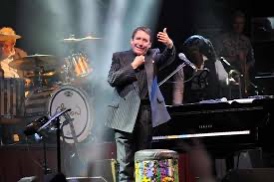Mannequin Monday – The Silence Between Notes

Is there music in the space between the notes? Can we hear music in the silences between heartbeats? British bandleader Jools Holland talks with other musicians during the COVID lockdown. This week we drape our bare mannequin in the cloak of silence.
And I offer writing of my own, a piece of flash fiction. “Jonathan’s Last Note.”
This Week: What I’m Reading
This week I read an article written by Jools Holland, who has a weekly live music show on BBC television. With COVID shutting down his live shows, Holland is now producing music. In conversation with musician Nitin Sawhney, Holland recalled hearing another musician say it was “the silences in between the notes that often created musical intensity and beauty.”
Sawhney agreed, said to Holland, “The first music I ever heard was when I was in my mother’s womb, and I heard the silences between her heartbeats.”

I read this… and thought, I have no idea what that means. I would normally forget I ever read this. But something got me thinking. Does this apply to writing and other creative arts?
I did a Goggle search. Started with the science of this concept. Apparently the space between heartbeats, termed the RR interval, averages 650 milliseconds at a rate of 92 beats per minute. That means each space is 0.6 to 1.2 seconds in duration. Perhaps far too short to be of any significance.
But Google told me other musicians believe the same thing. Debussy is credited with saying, music is the silence between the notes. Others say Mozart said the same thing.
Ron Drotos of KeyboardImprov.com says in his blog, “So what exactly goes on in between the notes? It’s not always a literal silence, is it? Each note is usually still ringing out before the next one is played, right? But yes, something is happening that relates to silence. You’re listening to the silence.”
Drotos continues, “You write or play a note, and then where does the next one come from? The silence. But only if we’re listening for it. Otherwise, our playing becomes a stream of run-on sentences that has no meaning. No subtlety. No breath.”
No subtlety. No breath.
Starting to make sense, yes? In a New York Times article, How the Silence Makes the Music, music critic Corinna da Fonseca-Wollheim says, “Before Western composers came up with a way to notate them, the length of rests in music were often dictated by buildings. When groups of monks, facing each other in a reverberant chapel, intoned psalms in plainchant, they inserted a pause in the middle of a verse. The length of this ‘media distinctio’ was partly determined by acoustics: It prevented the next line of text from getting entangled with the resonance trail of the last. But as the musicologist Emma Hornby has pointed out, it also created a meditative space. It synchronized the community and underlined, as she writes, ‘the unity of the monastery breathing and singing together.’”
As humans, Da Fonseca-Willheim says we know to interpret breaks in the flow of human communication. For example: pregnant pauses, stunned silence, expectant hush.
Applying these ideas to the art of writing, then, we need to find a way with words to “Let the natural decay fill in the blanks. Pull emotion out of the notes.” We need to give our readers breathing room to absorb and appreciate. A change of pace, perhaps. Creating space between dialogue, action and description. Experiencing the silence between two characters.
In an online article, 3 Easy Tricks For Improving Dialogue In Fiction, Maggie Doonan says, “Silence can transform a humdrum back-and-forth into gut-tightening tension or heart-hurting dread. Silence is one of the greatest tools a writer can employ, and one of the simplest.
“To insert silence into your dialogue, omit an answer. Instead of the usual prompt response between speakers, silence a character completely.
“That’s it.
“By silencing one of your characters, you instantly add weight to the remaining speaker’s words while simultaneously creating questions, emotive context, complexity and unspoken conflict.”
And, if I haven’t thoroughly confused you, here’s another related reference to negative space. An article in mymodernmet.com, Clever Typography Uses Negative Space To Illustrate the Meaning of the Word It Spells, demonstrates how a graphic designer Sander Flink uses “negative space that illustrates the meaning of the word.” Here’s an example:

I admit to cherry picking quotes and ideas this week. I’m no musician or music critic, only a writer in progress. But I do believe we can learn from other creative arts.
This Week – What I’m Writing
Playing with the notion of silence between notes, I attempted a bit of flash fiction. Under 1,000 words. Beginning, middle, end.
Jonathan’s Last Note
Jonathan played his last note in September. A rich bass note, full of energy, thrumming with depth. A fifty mile run in the hills and woods of Vermont. A test of physical and mental stamina. Starting in the early morning darkness, running till early afternoon. He finished third, coming in at 8.43.20 hours.

Late October. Jonathan existed in the silence following his last note. Living in the fade, in the decay, the diminishing hum. The diagnosis had slammed him to the ground. An inoperable tumor. A series of chemo treatments.
September’s last note turned into a sunset. The light fading, bleeding down out of sight.
For most, a sunset implies hope. Darkness followed by the light of another day.
For Jonathan, his sunset, his note, was only fading. The silence has as yet not pointed a way to the next note. After the last faint vibration, there will be only darkness.
Through the months of chemo, Jonathan did what he knew. He ran. Ran in diminishing distances. Ran to survive, to endure. To forget.
Early November. In a drizzling rain, he sits on the curb, a half mile from his home. He pukes into the street. A passing runner stops, walks him home.
He pukes into the street.
Sprawled across the couch, his running shoes kicked off, he reaches back to recall that last note. To remember the Vermont run. He feels only the decay. Feels the moment coming when he cannot run.
His phone rings.
“Jonathan?”
“Yeah.”
“Dr. Sugarman. I have the results of your last lab work.”
“Give it to me.”
“The tumor is shrinking. You’re in partial remission.”
“What?”
“The last series of chemo treatments worked. You turned the corner.”
At that moment Jonathan hears the next note. Soft, gentle. A guitar string barely touched.
He pulls his running shoes back on.
***
Leave a Reply